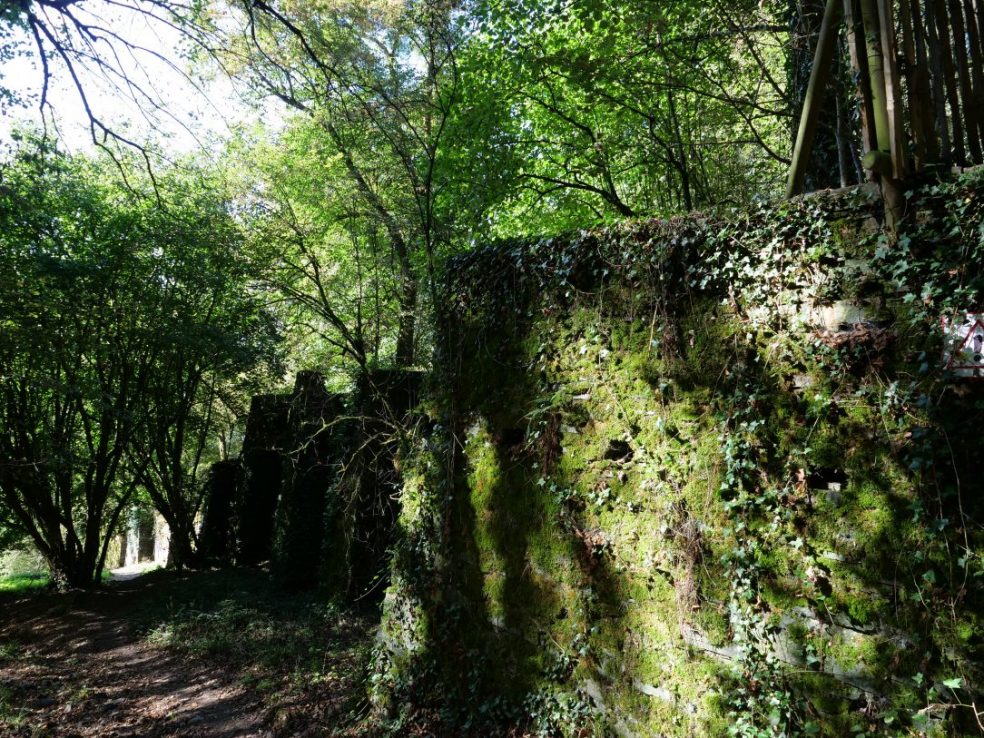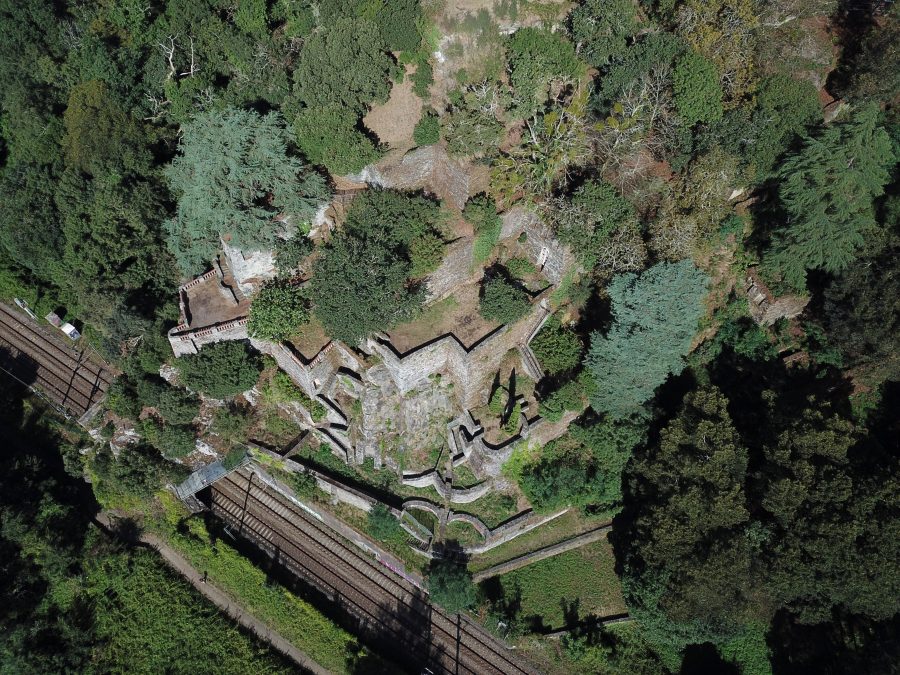The site of the Folies Siffait remains an enigma for a large part of the visitors. This old site, was the former castle “Château-Guy”, was developed during the 19th century by a father and then by his son. Let’s visit a forgotten site in the north-east of the Loire Atlantique between the city of Nantes and Ancenis.
The Folies Siffait

This unusual place located on the north bank of the Loire River is a set of hanging gardens, a unique place of its kind. It all began when in 1816, a certain Maximilien Siffait, embarked on his life’s work. For almost fourteen years this man worked on the ruins of a medieval fortification. His goal was to rehabilitate this place by creating a maze of terraces and niches at different levels. He will thus create what could be called hanging gardens.
But the work of Maximilien Siffait will not stop there. He will add a few pinches of mischief by adding dummy elements. These vestiges created from scratch are stairs, fortified entrances or the façade of a small temple. All around a massive surrounding wall protects this unusual place.

In 1830, Maximilien Siffait transmitted his work to his son. Oswald Siffait is a botanist, and it is with interest that he takes back the torch of his father. At the end of a few years, his father began to plant tree species. Oswald Siffait, Maximilien’s son, will give a new impetus to his father’s work.
Unfortunately with the advent of the railway along the Loire, the lower parts of the hanging gardens will be destroyed. Despite this, the Folies remain impassive. Then with the years, Oswald finally left for Nantes where he lived until he died in 1877, at number 6 Place Saint-Pierre.
The end of the hanging gardens?
Over time, the vegetation damages the stone walls and the site is weakened. But this advance of nature is nothing compared to the vibrations caused by the passage of trains on the railway line just below. As a result, after more than a century of fluctuations and a bombing by the allies in 1944 the site was closed to the general public. Stabilization and reinforcement work is undertaken. Today it is possible to visit the site with a guide and upon prior registration.
This complex was classified in 1992 and bought by the town hall in 1985. But for the commune of Le Cellier, the burden is too heavy, and finally, in 2007 it is the department which will acquire it. Today, the department of Loire Atlantique has begun numerous works to rehabilitate the site.
To be continued…
Address: Clermont, 44 850 Le Cellier. Just after a large property, you will find a small path that goes down to the Loire. This is the way to the Folies Sifflait.
photo credits: Yann